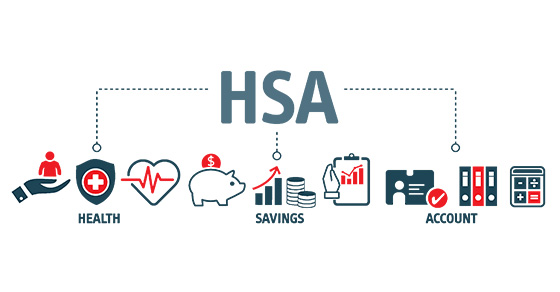Weekly Tax Brief
Evaluate whether a Health Savings Account is beneficial to you
- Details
- Published: 22 September 2023 22 September 2023

With the escalating cost of health care, many people are looking for a more cost-effective way to pay for it. For eligible individuals, a Health Savings Account (HSA) offers a tax-favorable way to set aside funds (or have an employer do so) to meet future medical needs. Here are four tax benefits:
- Contributions made to an HSA are deductible, within limits,
- Earnings on the funds in the HSA aren’t taxed,
- Contributions your employer makes aren’t taxed to you, and
- Distributions from the HSA to cover qualified medical expenses aren’t taxed.
Eligibility
To be eligible for an HSA, you must be covered by a “high deductible health plan.” For 2023, a high deductible health plan is one with an annual deductible of at least $1,500 for self-only coverage, or at least $3,000 for family coverage. (These amounts are scheduled to increase to $1,600 and $3,200 for 2024.)
For self-only coverage, the 2023 limit on deductible contributions is $3,850. For family coverage, the 2023 limit on deductible contributions is $7,750. (These amounts are scheduled to increase to $4,150 and $8,300 for 2024.) Additionally, annual out-of-pocket expenses required to be paid (other than for premiums) for covered benefits for 2023 can’t exceed $7,500 for self-only coverage or $15,000 for family coverage ($8,050 and $16,100 for 2024).
An individual (and the individual’s covered spouse) who has reached age 55 before the close of the year (and is an eligible HSA contributor) may make additional “catch-up” contributions for 2023 and 2024 of up to $1,000 per year.
HSAs may be established by, or on behalf of, any eligible individual.
Deduction limits
You can deduct contributions to an HSA for the year up to the total of your monthly limitation for the months you were eligible. For 2023, the monthly limitation on deductible contributions for a person with self-only coverage is 1/12 of $3,850. For an individual with family coverage, the monthly limitation on deductible contributions is 1/12 of $7,750. Thus, deductible contributions aren’t limited by the amount of the annual deductible under the high deductible health plan.
Also, taxpayers who are eligible individuals on the first day of the last month of the tax year are treated as having been eligible individuals for the entire year for purposes of computing the annual HSA contribution.
However, if an individual is enrolled in Medicare, he or she is no longer eligible under the HSA rules and contributions to an HSA can no longer be made.
On a once-only basis, taxpayers can withdraw funds from an IRA and transfer them tax-free to an HSA. The amount transferred can be up to the maximum deductible HSA contribution for the type of coverage (individual or family) in effect at the transfer time. The amount transferred is excluded from gross income and isn’t subject to the 10% early withdrawal penalty.
Taking distributions
HSA distributions to cover an eligible individual’s qualified medical expenses (or those of his or her spouse or dependents, if covered) aren’t taxed. Qualified medical expenses for these purposes generally means those that would qualify for the medical expense itemized deduction. If funds are withdrawn from the HSA for other reasons, the withdrawal is taxable. Additionally, an extra 20% tax will apply to the withdrawal, unless it’s made after reaching age 65 or in the event of death or disability.
As you can see, an HSA offers a very flexible option for providing health care coverage, but the rules are somewhat complicated. Contact us if you have questions.
© 2023





